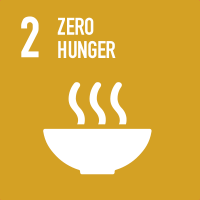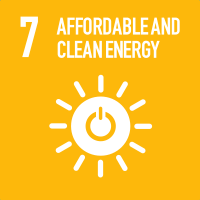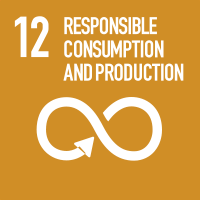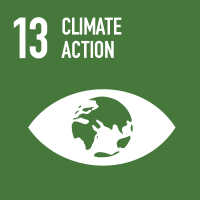Studying at the University of Verona
Here you can find information on the organisational aspects of the Programme, lecture timetables, learning activities and useful contact details for your time at the University, from enrolment to graduation.
Study Plan
This information is intended exclusively for students already enrolled in this course.If you are a new student interested in enrolling, you can find information about the course of study on the course page:
Laurea in Biotecnologie - Enrollment from 2025/2026The Study Plan includes all modules, teaching and learning activities that each student will need to undertake during their time at the University.
Please select your Study Plan based on your enrollment year.
1° Year
| Modules | Credits | TAF | SSD |
|---|
2° Year activated in the A.Y. 2024/2025
| Modules | Credits | TAF | SSD |
|---|
1 module between the following3° Year It will be activated in the A.Y. 2025/2026
| Modules | Credits | TAF | SSD |
|---|
1 module among the following1 module among the following1 module among the following| Modules | Credits | TAF | SSD |
|---|
| Modules | Credits | TAF | SSD |
|---|
1 module between the following| Modules | Credits | TAF | SSD |
|---|
1 module among the following1 module among the following1 module among the followingLegend | Type of training activity (TTA)
TAF (Type of Educational Activity) All courses and activities are classified into different types of educational activities, indicated by a letter.
Biochemistry of plants and others autothrophs (2024/2025)
Teaching code
4S008193
Credits
6
Language
Italian
Scientific Disciplinary Sector (SSD)
BIO/04 - PLANT PHYSIOLOGY
Courses Single
Authorized with reserve
The teaching is organized as follows:
Teoria
Laboratorio
Learning objectives
The course of biochemistry is intended to offer an integrated view of some fundamental aspects of the primary and secondary metabolism of plants and their integration and mutual influence. The course aims to define some of the main metabolic pathways and to provide the basis for metabolic analysis using biochemical, genetic and biophysical methods. Theoretical basics will be supplemented by the illustration of biotechnological applications of the engineering of the metabolic pathways involved. Particularly important will be the inhibition of photosynthesis by oxygen and its consequences for the productivity of algae and crops. Finally, the biogeochemical carbon cycle will be discussed.
Prerequisites and basic notions
Knowledge of General Biochemistry, Plant Biology, Cell Biology, Physics and Chemistry are required
Program
Part 1: Light as a source of energy and information in plants: control mechanisms of primary and secondary metabolism.
Part 2: Electron transport and ATP synthesis in bacteria, green algae and higher plants. Cyclic and linear transport. Electronic transport control.
Part 3: Carbon fixation: Calvin cycle, Hatch and Slack cycle, CAM metabolism. Perspectives of modification of metabolism in cultivated plants.
Part 4: Biosynthesis and mobilization of starch in chloroplast and leucoplasts. Metabolic relationships between chloroplast and cytoplasm. Transport of sugars into the plant.
Part 5: metabolism of hydrogen as an energy source. Hydrogenases in green algae, cyanobacteria and thermophilic bacteria. Bioenergetics of hydrogen production.
Part 6: Nitrogen metabolism. Symbiotic and bacterial fixation of atmospheric nitrogen. Nitrogen organization. Biosynthesis of essential amino acids.
Part 7: Sulfur metabolism. Biosynthesis of methionine and cysteine. Glutathione, phytochelatins and the detoxification of xenobiotic substances. Herbicides and pollutants.
Part 8: Secondary metabolism. The plant as a biosynthetic machine. A): terpenoids. Biotechnology of carotenoids for the production of dyes, vitamins and antioxidants. Alkaloids: biosynthesis and production of pharmaceutical products in plants. Phenylpropanoids: organization and genetic modification of a metabolic pathway for the production of fibers, pigments and other food additives.
Part 9: Biosynthesis and degradation of lipids. Role in the adaptation of plants to temperature. Lipids as a substrate for signal translation and biosynthesis of jasmonic acid.
Part 10: Production and storage of seed reserve proteins. Mobilization of protein reserves.
Didactic methods
The teacher will use lectures and group laboratory experiences.
Learning assessment procedures
The assessment of learning outcomes involves a written exam composed of questions deriving from (a) practicals, b) theory and (c) an open question requiring the description of one of the major metabolic pathways with specification of the chemical formulas of the intermediate metabolites and name of the enzymes involved. The report on the practicals will be evaluated.
Evaluation criteria
The exam aims to verify the degree of knowledge gained, the analytical ability, the ability to connect knowledge in a systemic way and in a precise and organic way, knowledge and the ability to reason on the metabolic pathways of the organicaction of carbon, nitrogen and sulphur.
Criteria for the composition of the final grade
The final grade will be composed of the sum of the results of the multiple solution answers, the question on metabolic pathways and the report of the laboratory activities. The final evaluation is expressed out of thirty.
Exam language
Italiano




